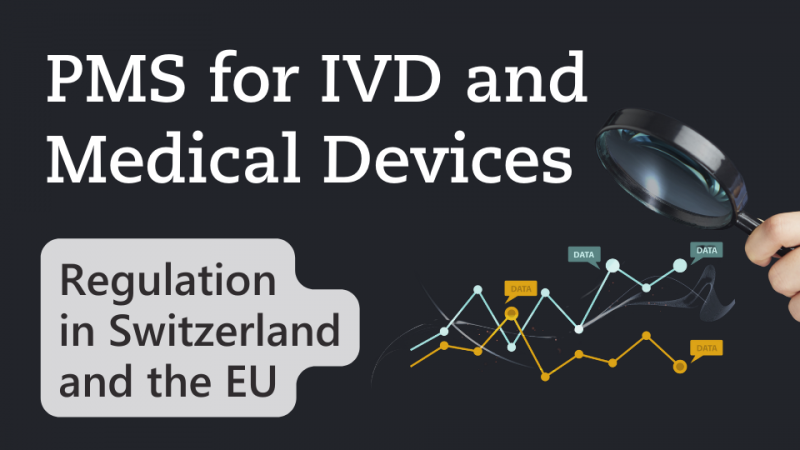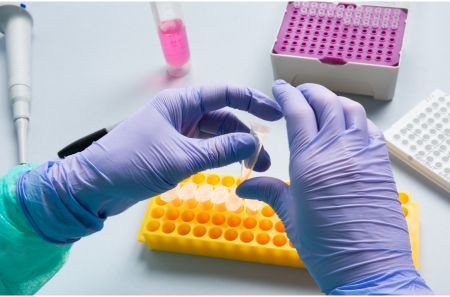Regulatory Affairs: Challenges for Swiss manufacturers of medical devices and in vitro diagnostics (IVDs)
15/08/2023
Challenges for Swiss manufacturers of medical devices and in vitro diagnostics in the area of Regulatory Affairs and New MDR and IVDR transition periods2022 was an exciting year for the international medical device industry. EU manufacturers had to implement the requirements of the Medical Device Regulation (EU) 2017/745 (MDR), while in vitro diagnostics (IVD) manufacturers were faced with the introduction of the EU In Vitro Diagnostic Medical Device Regulation (EU) 2017/746 (IVDR) and had to update their technical documentation for in vitro diagnostic devices. With Brexit (UK) and the end of the Mutual Recognition Agreement (MRA) with Switzerland, both the UK and Switzerland have effectively become third countries. This has a significant impact on the regulatory compliance for medical devices and in vitro diagnostics placed on the market in the UK and Switzerland.What does this mean for Swiss medical device and in vitro diagnostic manufacturers? In this article, we would like to give you an overview of the most important developments relevant to you.
Since Chapter 4 (Medical Devices) of the Agreement between the European Community and the Swiss Confederation on Mutual Recognition in relation to Conformity Assessment (MRA, SR 0.946.526.81) has not been adapted and extended under the MDR and IVDR, Swiss manufacturers of medical devices and in vitro diagnostic medical devices (IVDs) must now meet additional requirements to demonstrate conformity with EU requirements before they can place their products on the European market. Here is an overview of the most important steps:
It is important to note that these steps may vary depending on the product and risk class. As a Swiss manufacturer, you should therefore check the exact requirements of the MDR/IVDR for your specific products and, if necessary, seek assistance from experts or consultants to ensure that you implement all the required steps correctly.Compliance with EU regulatory compliance is essential to ensure access to the European market and to legally place products on the market. With careful planning and implementation, you can efficiently complete the necessary conformity assessment steps and successfully market your products in the EU.
Failure to update the Mutual Recognition Agreement (MRA) and consequences for Swiss manufacturers
Since Chapter 4 (Medical Devices) of the Agreement between the European Community and the Swiss Confederation on Mutual Recognition in relation to Conformity Assessment (MRA, SR 0.946.526.81) has not been adapted and extended under the MDR and IVDR, Swiss manufacturers of medical devices and in vitro diagnostic medical devices (IVDs) must now meet additional requirements to demonstrate conformity with EU requirements before they can place their products on the European market. Here is an overview of the most important steps:
- Conformity assessment according to EU regulations Swiss manufacturers must assess their products according to the EU Regulations on Medical Devices (EU 2017/745; MDR) and In Vitro Diagnostic Medical Devices (EU 2017/746; IVDD) and ensure that they comply with the respective regulatory compliance. This includes the preparation of technical documentation and the implementation of quality management systems in accordance with the requirements of the MDR/IVDR.
- Appointment of a European Authorized Representative (EU-REP): Swiss manufacturers must appoint a natural resident or legal person in the EU. This person acts as the manufacturer's contact and representative in the EU and assumes certain obligations on behalf of the manufacturer, such as cooperation with the competent authorities.
- Labeling update: Product labeling must be in accordance with EU regulatory compliance. This includes, but is not limited to, the affixing of the CE marking (if applicable), the identification of the European Authorized Representative, product labeling as required by the MDR/IVDR and the provision of instructions for use, and product information in the required official languages of the EU target market.
- Submission to a Notified Body: Depending on the risk class of the devices, Swiss manufacturers must submit their devices to a Notified Body in the EU for conformity assessment. The Notified Body examines the technical documentation and confirms the conformity of the device with the requirements of the MDR/IVDR. Collaboration with a recognized Notified Body is mandatory for certain classes of medical devices and in vitro diagnostics (IVDs). In addition, depending on the class of medical device or IVD, a certified quality management system that also meets the requirements of the MDR/IVDR is required.
- Preparation of a Declaration of Conformity: Swiss manufacturers must draw up a declaration of conformity confirming that their device complies with the regulatory compliance of the IVDR/MDR. This declaration must be submitted with the technical documentation and accompany the device.
It is important to note that these steps may vary depending on the product and risk class. As a Swiss manufacturer, you should therefore check the exact requirements of the MDR/IVDR for your specific products and, if necessary, seek assistance from experts or consultants to ensure that you implement all the required steps correctly.Compliance with EU regulatory compliance is essential to ensure access to the European market and to legally place products on the market. With careful planning and implementation, you can efficiently complete the necessary conformity assessment steps and successfully market your products in the EU.


